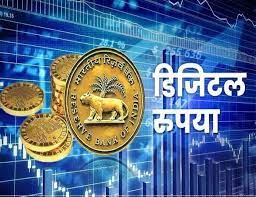The Reserve Bank of India has sent off India’s most memorable Digital Rupee on November 1 for the wholesale fragment. The RBI national bank issues money notes as the Digital rupee (e), frequently alluded to as Central Bank Digital Currency (CBDC).
It is basically indistinguishable from banknotes, but since it is advanced, it is likely more straightforward, speedier, and more affordable. It additionally offers every one of the benefits for exchanges that other advanced installment frameworks do.
For the wholesale pilot project for the Digital rupee, the RBI has picked nine banks to participate. These incorporate the Union Bank of India, State Bank of India, Bank of Baroda, HDFC Bank, ICICI Bank, Kotak Mahindra Bank, Yes Bank, IDFC First Bank, and HSBC.
Two phases make up the send off process. The digital rupee has been presented for wholesale transactions, or for enormous exchanges, interestingly during this trial. This month alone, the RBI will lead an equal retail trial to the wholesale e-rupee pilot.
Contrast between Digital rupee and digital currency
Since the digital rupee is certainly not an actual decent or virtual resource, not at all like cryptographic forms of money, there can be no immediate examination between the CBDC (Central Bank Digital Currency) and them. Digital currency coins are additionally not exactly cash.
Like the paper banknotes that central banks like the RBI issue, this digital rupee can be changed over into cash. The CBDC, which will carry out similar role as banknotes yet is definitely not a decentralized resource like digital currencies, will keep on being given by the RBI.
A country’s government issued money is known as its central bank digital cash (CBDC), though digital currencies are an elective installment technique with their own restrictive calculation. The cryptographic forms of money are computerized resources in a decentralized organization, and the advanced monetary standards can be alluded to as the country’s computerized fiat.
The worth of a cryptographic money, then again, is free of Central financial specialists and follows a straightforward cycle from mining to proprietorship to move of resources, rather than digital monetary forms, which are totally managed by the national bank and the government, who set the cash’s worth.
Objective of sending off Digital Rupee
India’s progression in the fight for virtual monetary standards is the fundamental objective of the Reserve Bank of India’s (RBI) pilot project on advanced cash. This is likewise because of the rising fame of digital forms of money.
As per Rachit Chawla, the presentation would certainly modify the battleground in light of the fact that the computerized rupee will expand proficiency and straightforwardness because of the utilization of blockchain innovation. Blockchain will likewise empower record support and constant following.
Clients will have nonstop admittance to the installment framework, whether they are discount or retail. Direct installments from Indian clients diminish exchange costs and empower ongoing record settlements. Furthermore, utilizing a digital rupee will speed up worldwide exchange and eliminate the necessity for opening an account.

























